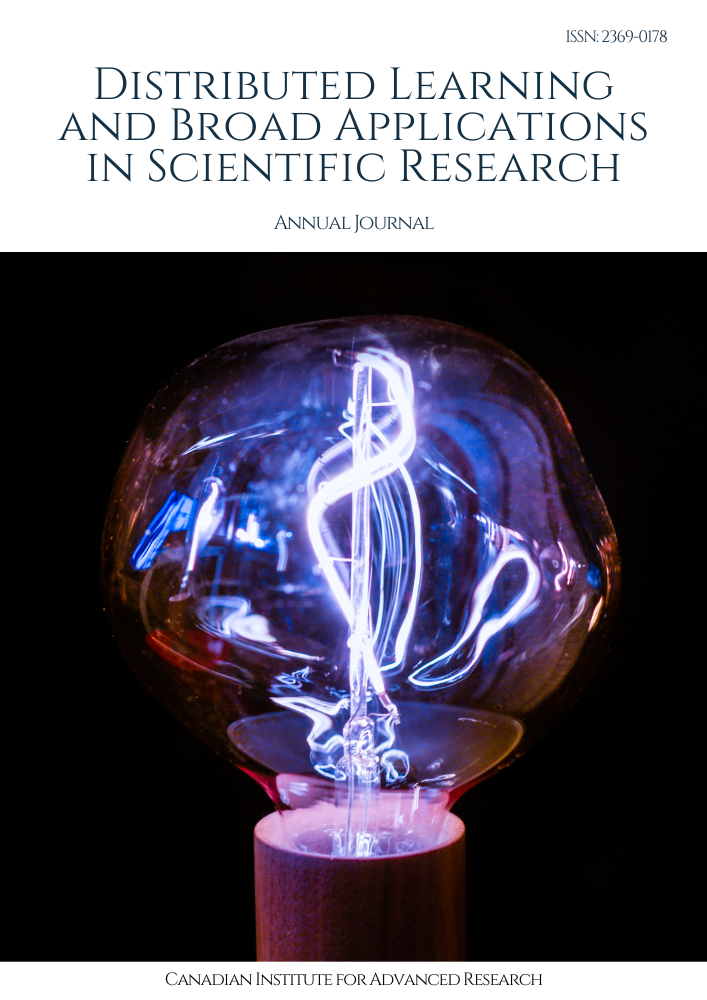Hybrid Neural Networks - Integration and Applications: Investigating approaches for integrating multiple neural network architectures to leverage their complementary strengths
Keywords:
Hybrid Neural Networks, Integration, Neural Network ArchitecturesAbstract
Hybrid Neural Networks (HNNs) have emerged as a promising approach to combine the strengths of different neural network architectures. This paper explores various integration methods for HNNs and their applications across different domains. We first discuss the motivation behind using HNNs and then delve into the techniques used to integrate different architectures. We also highlight several successful applications of HNNs, including image classification, natural language processing, and reinforcement learning. Finally, we discuss the challenges and future directions of HNN research.
Downloads
References
Tatineni, Sumanth, and Anjali Rodwal. “Leveraging AI for Seamless Integration of DevOps and MLOps: Techniques for Automated Testing, Continuous Delivery, and Model Governance”. Journal of Machine Learning in Pharmaceutical Research, vol. 2, no. 2, Sept. 2022, pp. 9-41, https://pharmapub.org/index.php/jmlpr/article/view/17.
Prabhod, Kummaragunta Joel. "Advanced Machine Learning Techniques for Predictive Maintenance in Industrial IoT: Integrating Generative AI and Deep Learning for Real-Time Monitoring." Journal of AI-Assisted Scientific Discovery 1.1 (2021): 1-29.
Tatineni, Sumanth, and Venkat Raviteja Boppana. "AI-Powered DevOps and MLOps Frameworks: Enhancing Collaboration, Automation, and Scalability in Machine Learning Pipelines." Journal of Artificial Intelligence Research and Applications 1.2 (2021): 58-88.
Downloads
Published
Issue
Section
License

This work is licensed under a Creative Commons Attribution-NonCommercial-ShareAlike 4.0 International License.
License Terms
Ownership and Licensing:
Authors of research papers submitted to Distributed Learning and Broad Applications in Scientific Research retain the copyright of their work while granting the journal certain rights. Authors maintain ownership of the copyright and have granted the journal a right of first publication. Simultaneously, authors agree to license their research papers under the Creative Commons Attribution-NonCommercial-ShareAlike 4.0 International (CC BY-NC-SA 4.0) License.
License Permissions:
Under the CC BY-NC-SA 4.0 License, others are permitted to share and adapt the work, as long as proper attribution is given to the authors and acknowledgement is made of the initial publication in the journal. This license allows for the broad dissemination and utilization of research papers.
Additional Distribution Arrangements:
Authors are free to enter into separate contractual arrangements for the non-exclusive distribution of the journal's published version of the work. This may include posting the work to institutional repositories, publishing it in journals or books, or other forms of dissemination. In such cases, authors are requested to acknowledge the initial publication of the work in this journal.
Online Posting:
Authors are encouraged to share their work online, including in institutional repositories, disciplinary repositories, or on their personal websites. This permission applies both prior to and during the submission process to the journal. Online sharing enhances the visibility and accessibility of the research papers.
Responsibility and Liability:
Authors are responsible for ensuring that their research papers do not infringe upon the copyright, privacy, or other rights of any third party. Scientific Research Canada disclaims any liability or responsibility for any copyright infringement or violation of third-party rights in the research papers.
If you have any questions or concerns regarding these license terms, please contact us at editor@dlabi.org.



